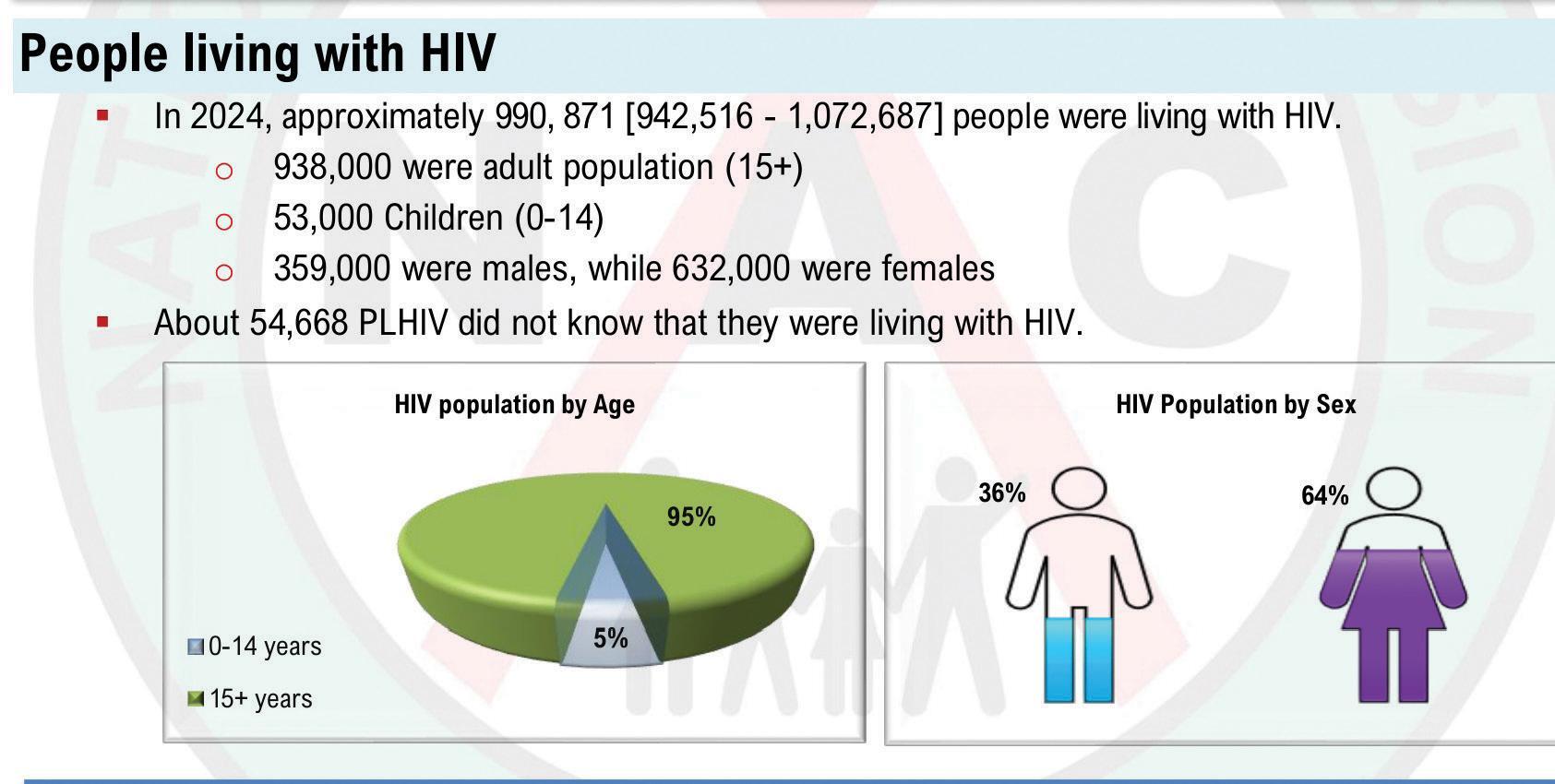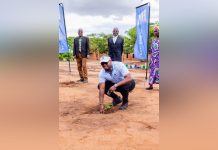By Clever Mwale
Africa-Press – Malawi. Malawi’s HIV epidemic has seen significant progress over the past two decades, with new figures from the 2025 National HIV Fact Sheet showing major declines in new infections and Aids-related deaths.
In 2024, an estimated 990,871 people were living with HIV in the country.
Of these, 938,000 were adults aged 15 and above while 53,000 were children under the age of 14. Women accounted for 632,000 cases and men 359,000.
About 54,668 people living with HIV were unaware of their status.
By the end of 2024, 896,035 people, representing 90 percent of all those living with HIV, were on antiretroviral therapy (ART).
This marks a significant rise from 2004, when just 10,344 people were accessing treatment. Among adults aged 15 and above, ART coverage stood at 92 percent, with 90 percent coverage for men and 93 percent for women.
About 96 percent of pregnant women living with HIV were on ART to prevent mother-to-child transmission.
New HIV infection rates have dropped by 91 percent since their peak in 1993.
Between 2010 and 2024, infections declined from 56,977 to 11,757.
Most new infections in 2024 occurred among people aged 15 and above (82 percent), with 80 percent in the 15-49 age bracket.
New infections among children dropped by 87 percent since 2010, from 16,793 to 2,164.
Women and girls made up 61 percent of all new HIV infections in 2024.
Of these, 21 percent were among girls aged between 10 and 19 years, 21 percent among young women aged between 20 and 24 years, and 42 percent among those aged between 15 and 24 years.
Aids-related deaths have fallen by 83 percent since their peak in 2003.
In 2024, 13,694 people died from Aids-related illnesses compared to 38,289 in 2010.
Since the start of the ART programme in 2003, 824,293 deaths have been averted, including 53,389 in 2024 alone.
The Southern Region accounted for 61 percent of all people living with HIV and 57 percent of new infections in 2024.
The Central Region recorded 29 percent of cases and 31 percent of new infections while the Northern Region registered 10 percent in both categories.
HIV prevalence among people aged between 15 and 49 years was highest in the Southern Region, at 9 percent, followed by 5 percent in the Northern Region and 4 percent in the Central Region.
Key populations remain disproportionately affected.
In 2024, there were around 20,000 female sex workers, 4,500 men who have sex with men, 700 transgender people and 2,300 people who inject drugs living with HIV.
HIV prevalence among these groups was 27.4 percent for female sex workers, 14.3 percent for men who have sex with men, 12.7 percent for transgender individuals and 50 percent for people who inject drugs.
Since the launch of the Prevention of Mother-to- Child Transmission (PMTCT) programme in 2011, 146,975 infections have been averted, including 8,390 in 2024.
According to the 2019- 2022 National Aids Spending Assessment, development partners contributed about 77 percent of HIV and Aids funding while domestic resources accounted for 23 percent.
Over half of the total HIV spending went to treatment, care and support, with 14 percent allocated to testing and counselling.
Only 10 percent was directed to prevention, below the 25 percent recommended by the Joint United Nations Programme on HIV/Aids (UNaids0.
HIV prevalence among the general population aged between 15 and 49 years stands at 6.3 percent.
The country continues to make progress towards the UNaids 95–95–95 targets, with high levels of ART coverage and viral suppression among adults.
The National Aids Commission (Nac) has since said the data will guide targeted interventions to close the remaining gaps in testing, treatment and prevention.
Source: The Times Group
For More News And Analysis About Malawi Follow Africa-Press






